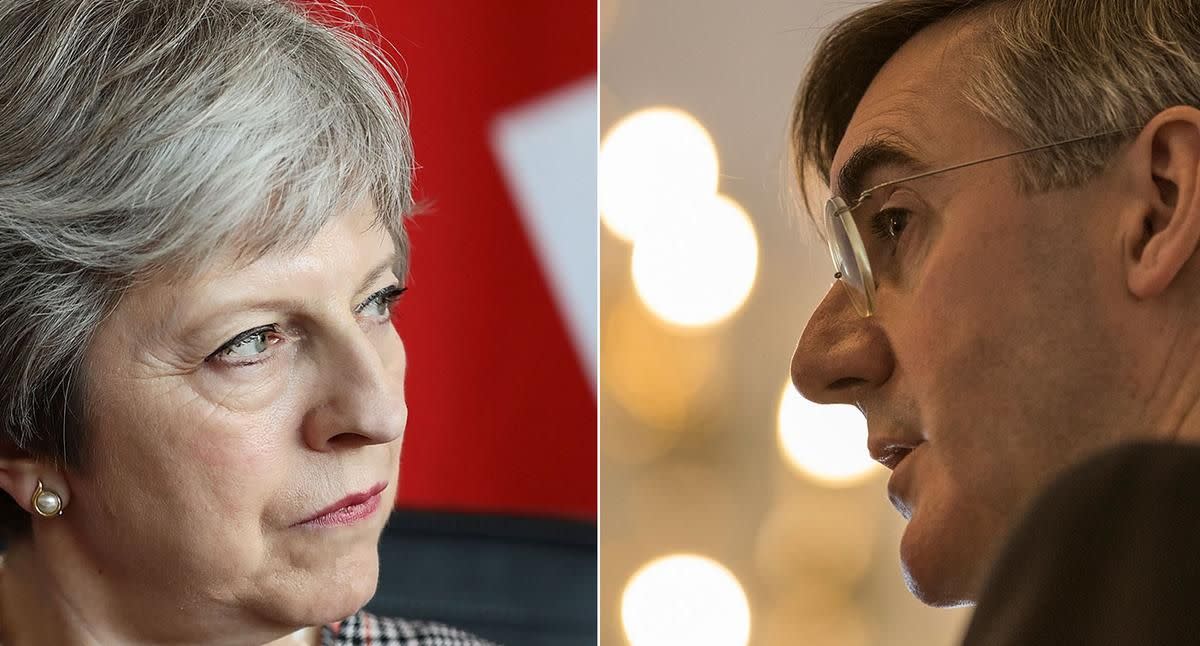Jacob Rees-Mogg submits letter of no confidence in Theresa May in attempt to topple PM over Brexit

Jacob Rees-Mogg has submitted a letter of no confidence in Theresa May, bringing the prospect of a Conservative leadership election within touching distance.
If 48 letters are handed to Graham Brady, who chairs the 1922 Committee of backbenchers, Tory MPs will vote on whether Mrs May continues in her position.
Mr Rees-Mogg today addressed a meeting of the the European Research Group, the caucus of MPs pushing for a hard Brexit.
It is thought he urged fellow Brexiteers to join the plot to topple the PM and to alter the UK’s Brexit strategy.
The letter includes: “Regrettably, the draft Withdrawal Agreement presented to Parliament today has turned out to be worse than anticipated and fails to meet the promises given to the nation by the Prime Minister, either on her own account or on behalf of us all in the Conservative Party Manifesto.”
His ERG colleague Steve Baker echoed the calls to oust Mrs May. He told reporters: “We’ve tried everything to change policy but not the Prime Minister but it has not worked. It is too late. We need a new leader.”
However in the absence of another unifying candidate in the party, Theresa May could easily win a vote of no confidence and continue as PM.

The PM faced a bruising session in the Commons today as MPs lined up to criticise the deal negotiated with the EU.
Mr Rees-Mogg launched a scathing attack against the Prime Minister as she defended her proposal, listing areas of the deal where he said the “honourable” Prime Minister had reneged on promises, including leaving the customs union, maintaining the integrity of the Union and removing the jurisdiction of the European Court of Justice.
Theresa May doggedly defended her deal, calling for the country to unite behind her in an address this afternoon.
She said: “I believe with every fibre of my being that the course I have set out is the right one for our country and all our people.
“From the very beginning I have known what I wanted to deliver for the British people to honour their vote in the referendum.”
How would a Conservative leadership contest work?
A leadership contest can be triggered in two ways. Either the leader must resign, or at least 15% of Conservative MPs need to write to the chairman of the 1922 Committee expressing a lack of confidence in the current leader.
The 1922 Committee is a committee of all the Conservative backbench MPs, which meets weekly while the House of Commons is sitting.
Any MP who wishes to run as candidate needs the support of two fellow MPs in order to get onto the ballot paper. If only one candidate is nominated, they automatically become the next leader.
Tory MPs then vote using the first past the post system. If more than three candidates have been nominated, the one with the lowest proportion of votes is eliminated and another ballot is held. This process continues until two candidates remain.
Conservative Party members then vote for the two nominees, and the winner becomes the new leader.

 Yahoo News
Yahoo News 

